TABLE OF CONTENTS
With various uses and applications, SATA cables are quite effective in connecting various drives to your computer’s motherboard.
However, SATA cables have different designs and specifications that are suited for different applications.
The speeds of SATA cables also vary from one generation to another.
And while SATA cables are quite versatile, telling the difference between various types might be challenging, especially if you’re not handling such cables on a daily basis.
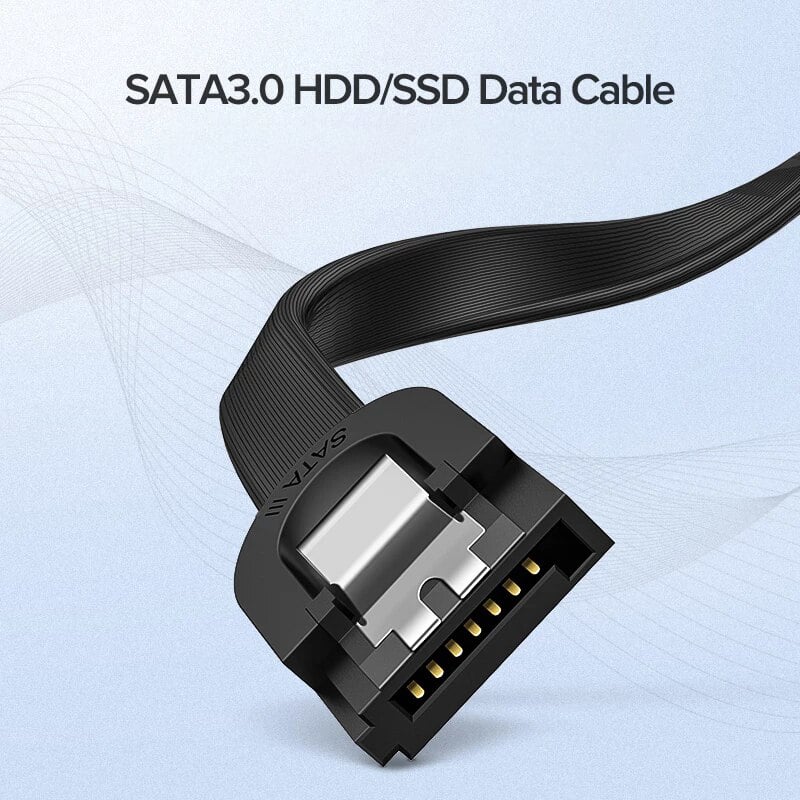
Source: UGREEN
In this guide, we’re going to take you through the different types of SATA cables that are out there, making it easier for you to understand how they operate.
Let’s dive in.
What Are SATA Cables?
Serial Advanced Technology Attachment cables are special types of cables, which are mainly used to connect multiple types of storage drives (optical drives, hard drives, solid-state drives) to a motherboard.
The technology dates back to the early 2000s. It was introduced to replace the older cables, which are known as PATA cables.
Obviously, SATA cables are faster than the old PATA cables.
Unlike PATA cables, SATA cables can be disconnected or connected to your computer’s motherboard while the computer is still running through a process known as hot-swapping.
SATA Versions
SATA cables are available in different versions; each generation is rated at different speeds and specifications.
The bandwidth throughput and data transfer rate improved with each generation.
- SATA I is the first generation interface and operates at 1.5Gb/s with a maximum bandwidth throughput of 150MB/s.
- SATA II is the second generation interface and operates at 3Gb/s. The maximum bandwidth throughput of SATA II is 300MB/s.
- SATA III is the third generation interface and has a transfer rate of 6Gb/s with a bandwidth throughput of 600MB/s.
The latest generation is compatible with previous generations through backward compatibility.
Note: Gb/s (Gigabit per second) can be easily confused with GB/s (Gigabyte per second). 8 bits equal one byte.
Here’s an overview table for quick comparison of Sata Cable generations and Bandwidth:
| Generation | Bandwidth Throughput | Transfer rate in Gb/s |
|---|---|---|
| SATA I | 150MB/s | 1.5Gb/s |
| SATA II | 300MB/s | 3Gb/s |
| SATA III | 600MB/s | 6Gb/s |
The Two Main Types of SATA Cables
There are two major types of SATA cables:
- SATA power cables
- SATA data cables
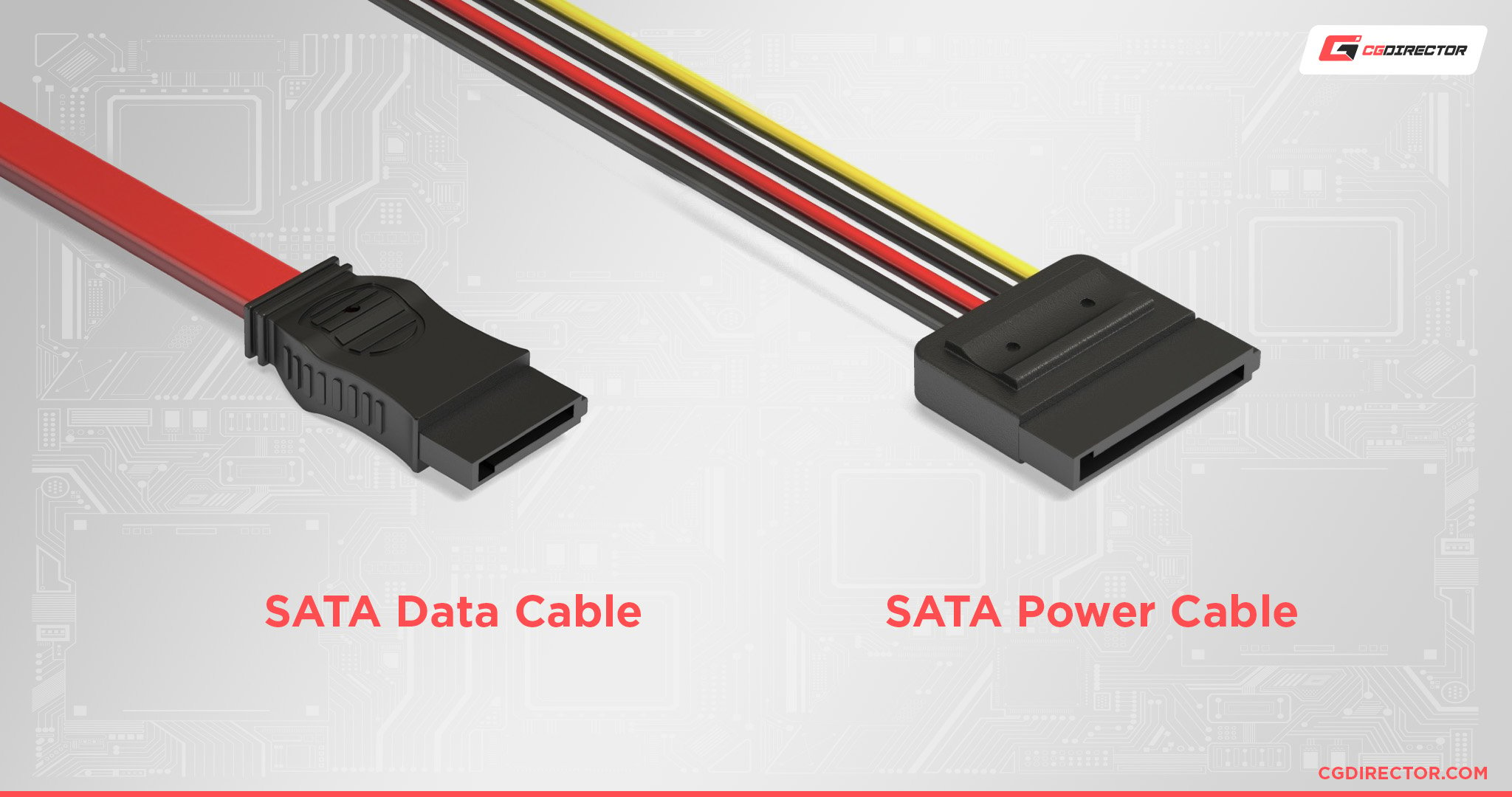
Source: Cablestogo
SATA Power Cable
A SATA power cable has a connector with 15 pins, which are designed to supply power.
Three different pins on the connector can work hand-in-hand in parallel to conduct power with varying voltages.
Apart from that, a SATA power cable features thin rounded wires, which go straight to the connector.
SATA Data Cable
As the name hints, a data cable facilitates the transfer of data.
It packs a connector with 7 pins and is mainly used to connect a hard disk to a PC’s motherboard. In short, one end should be connected to the port on your hard disk.
The other end should be connected to the SATA connector port, which is found on the motherboard.
In terms of appearance and design, data SATA cables are thinner and smaller than power cables.
Moreover, other data cables might feature an angled connector, making it easier for you to connect them to your storage devices in tight situations.
Other Types of SATA Cables
SATA to USB
SATA to USB cables are quite effective in connecting SSD drives to a computer through a USB port.
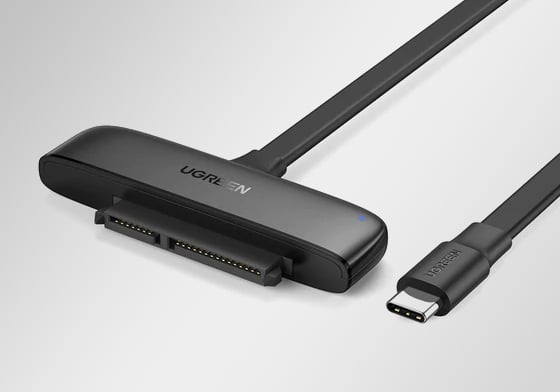
Source: UGREEN
Such cables can be used to streamline the data transfer process or extend the storage space of your laptop.
They are often used to quickly plug in internal storage devices that do not come with an external storage enclosure. This can be a life-saver for doing backups or moving files off of a PC or Laptop that does not turn on or boot anymore.
e-SATA
e-SATA (external SATA) is a cable, which makes it easier for you to connect an external hard drive to your computer through the e-SATA connector port.
In short, it is designed to connect to the exterior part of a device.
Micro SATA
As the name hints, micro SATA cables are designed to connect mSATA SSDs to a motherboard.
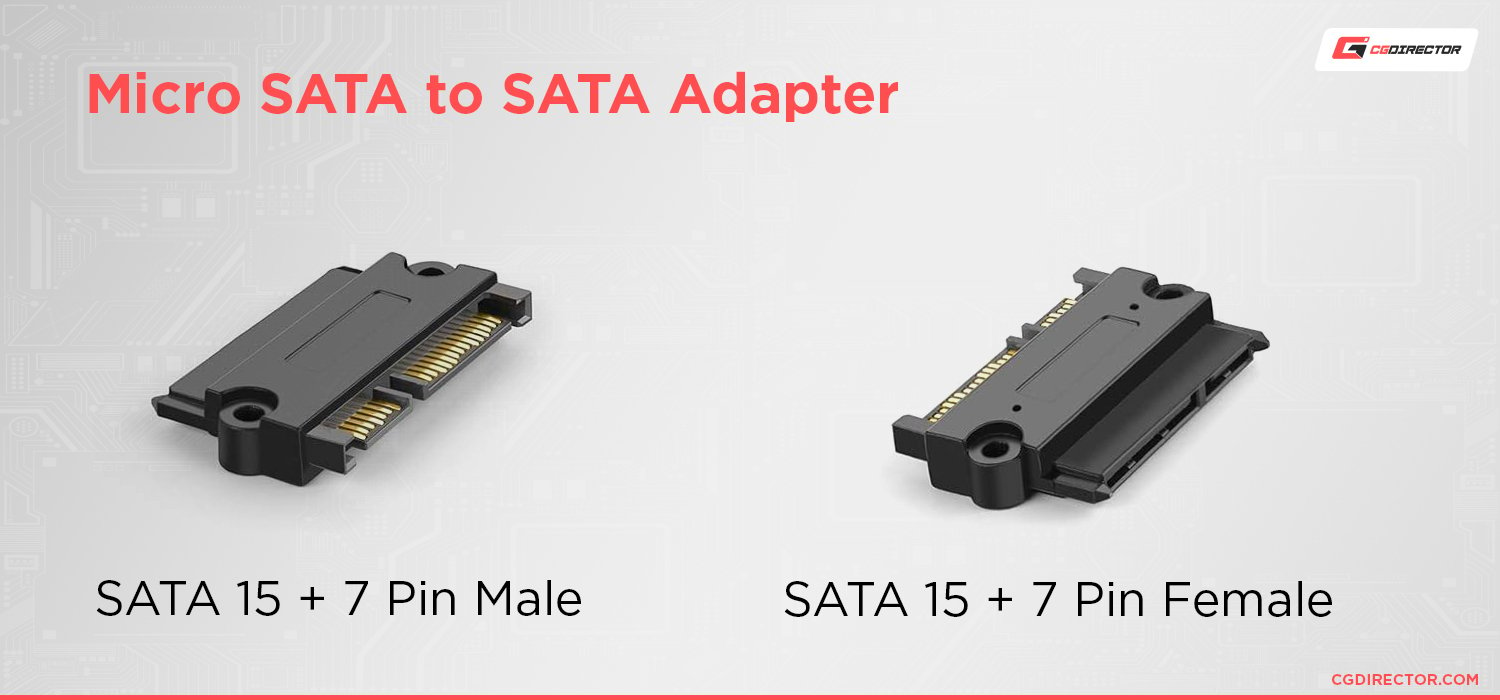
Source: Amazon
Low Profile SATA
Low-profile SATA cables are helpful for PC Builds that have bulky GPUs obstructing the SATA Ports. They fit beneath long GPUs without the need to bend the SATA cable.
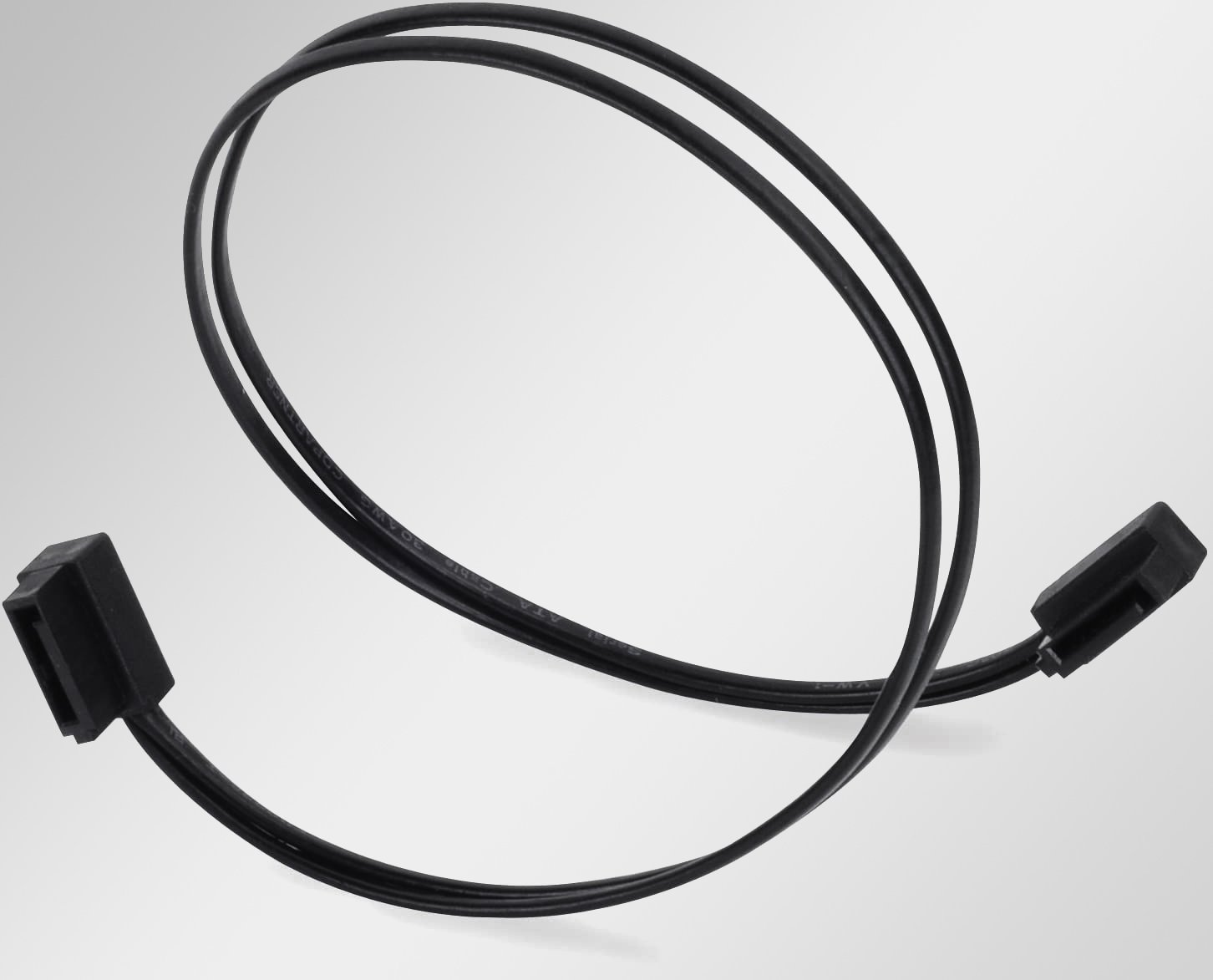
Source: Silverstonetek
Using SATA Cables to connect storage devices
The installation process differs, based on the type of SATA cable that you are planning to use.
For example, if you are planning to upgrade your HDD with a new one (or swapping out any SATA device with a different SATA device), you can leave the SATA cable plugged in to the motherboard.
Disconnect the end that connects to the storage device you’re looking to upgrade, then replace the device and plug the ends of the SATA power and data cable back into the new device.
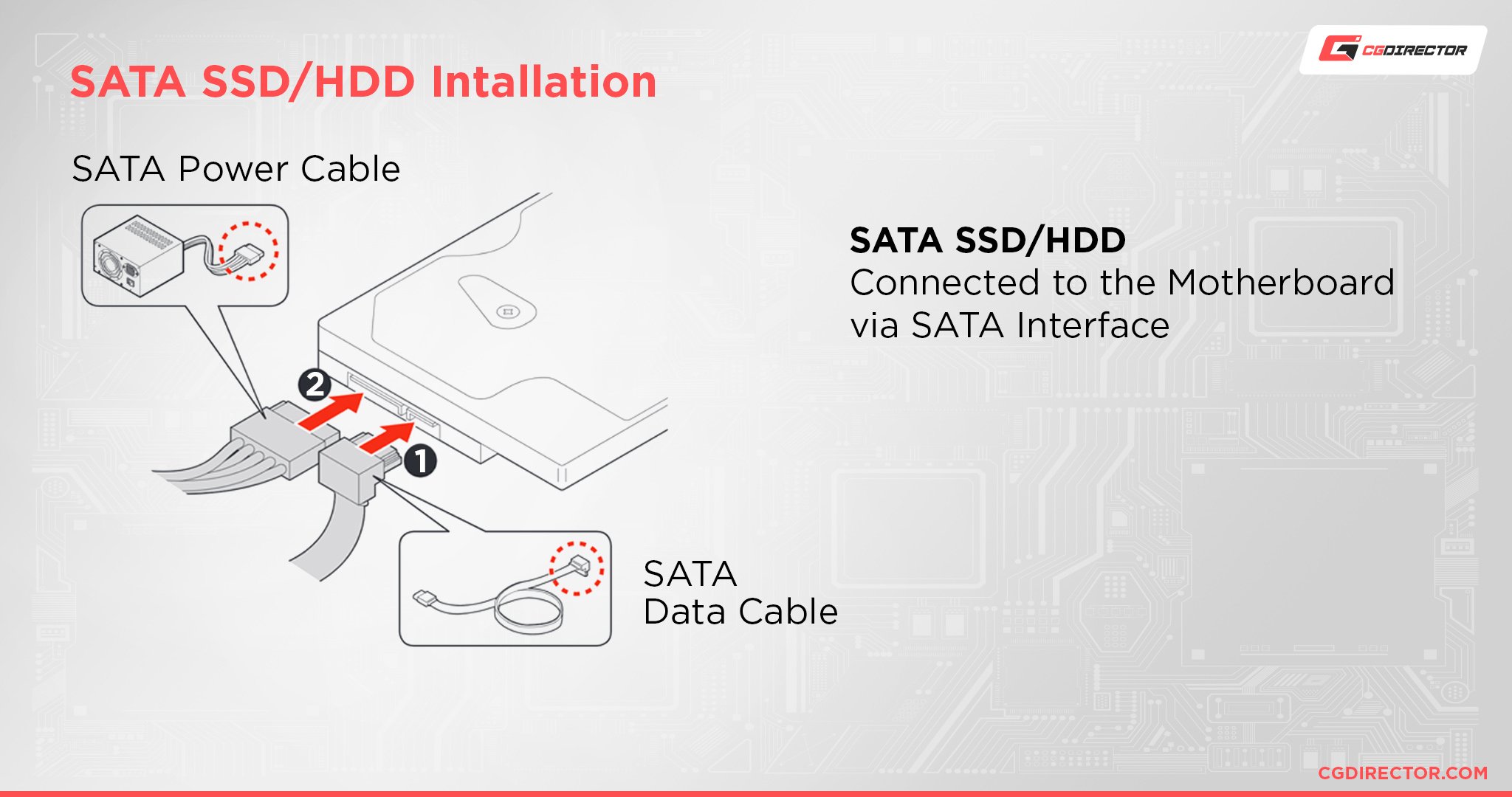
Follow these steps to install addition SATA storage devices on your PC’s motherboard:
- Turn off your PC and open the case by removing the side panel
- Place the storage device into an empty storage bay (3,5″ or 2,5″) in your case
- Depending on your case, the device will either be snapped in automatically or has to be screwed tight
- Check if the SATA connection ports are easily accessible with the SATA cable length you have available
- Connect one end of the SATA cable to the hard drive, then connect the other end of the cable to one of the free SATA connectors on your motherboard.
- Start with a SATA port number first (Check your motherboard manual or the print on the motherboard itself to find out which port to use)
- Once you finish connecting the SATA cable to the suitable ports, check whether the connection is tight
- Close your case and power up your PC, boot into your OS to see if it has recognized the drive automatically
FAQ
Are PATA cables still used?
It’s quite rare to come across a device that uses PATA cables—they were replaced with SATA cables.
SATA cables are faster than PATA cables with the latest generation operating with a 6Gb/s transfer rate.
Which SATA cable generation is used nowadays?
Most devices use the SATA III interface.
Apart from that, there are different versions of the SATA 3 interface—3.1,3.2,3.3.
SATA 3 interface is quite fast and has super transfer speeds.
Can you use a SATA cable on a computer that doesn’t have a SATA connection port?
If a PC doesn’t have an external SATA connection port, you can use a SATA to eSATA adapter cable to make the connection work.
Over to You
Do you have any questions about SATA Cables? Let us know in the comment section down below or head over to our forum and ask away!
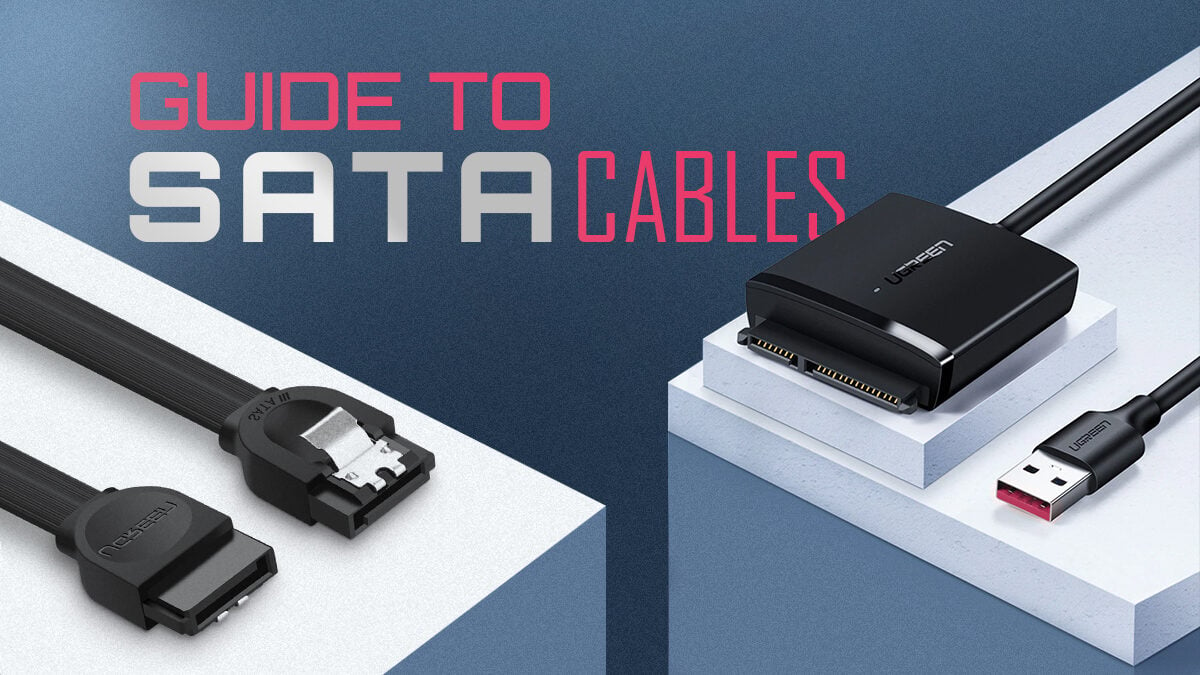
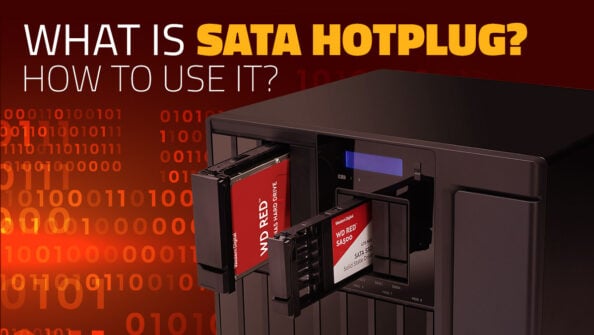
![The Best NVMe SSDs Available Today [Updated] The Best NVMe SSDs Available Today [Updated]](https://www.cgdirector.com/wp-content/uploads/media/2020/01/BestNVMeSSDs-FTwitter_1200x675-594x335.jpg)
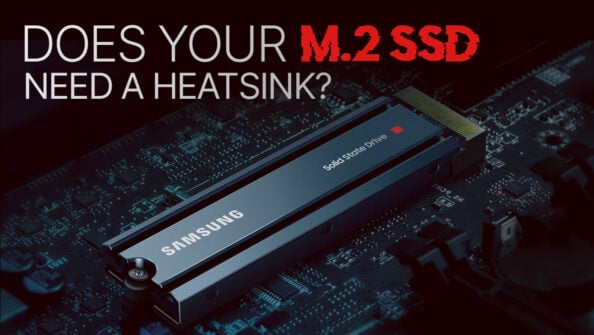
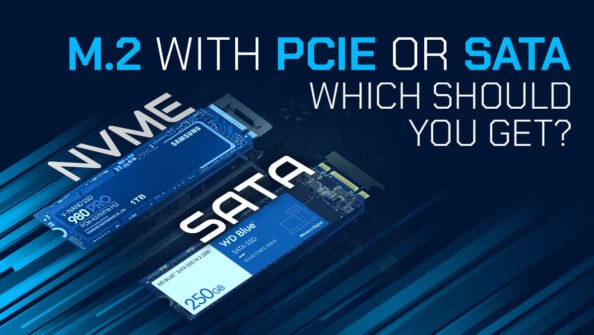

12 Comments
23 August, 2023
Thank you for the information provided above. I want to ask following information:-
a. If two or three hard disks are installed and SATA cables have been removed from all ports of the motherboard, then how to fix the SATA cables again on proper port or canwe insrt the same on any port?
b.How can Idecide the type of SATA cable by visual checking whether it is SATA 1 , 2 or 3? Is there any difference of colour or the will be checke only by fixing on mother board and operation of PC?
15 March, 2024
> b. Actually, over a decade now the SATA III protocol used widely for 99% of the cases.
SATA II or III is ‘tech protocol’, not ‘cable’. The ‘cable’ is doing the same even if, but dependently, different quality or look.
> a. You can also set it from BIOS/UEFI, any way but it’s always Recommended to Plug the “Drive with the Operating System” (OS)(ex.Windows7) to motherboard’s port SATA_0.
(port SATA_0 is always the ‘primary’ and as follows 1,2,.. as Secondary,Tertiary,..etc. or lastly (if any) ‘e-SATA’ port which is intended for ‘external SATA interface’ or else ‘quick SATA connection’)
WARNING! As a Computer is working DO NOT remove any SATA cable and mostly if the one is connected with OS that working ON. (It’s like sawing the branch you’re sitting on.)
23 December, 2022
When I connect my SATA Drive to the USB on the PC via the SATA to USB cable, the drive shows up as “Removable Disk F:” I have tried two different PC’s but the result is always that the drive
shows up a “Removable Disk F:”. Any ideas?
9 February, 2023
I’ve got a SATA->USB3.0 cable, probably similiar to yours. Mine does the same. The computer will read and write from the drive, but I think there’s a small chip in the cable that the computer identifies with, instead of the drive itself. No matter what drive I plug in, the machine always gets an ID of “ASMT Removable Disk x:” It’s a cable manufacturer thing, I guess…
GOOD DAY…
15 March, 2024
Your Drive is connected through USB (port), so, acts like any USB-Drive and that’s normal. Note: the SATA connection uses 7 wires for ‘data transfer’ and 4 wires for ‘Power Voltages’, as the USB connection uses 5 wires for both ‘Power’ and ‘data transfer’. In short, USB connection tech fits with SATA, but a USB DRIVE can’t draw enough Power or/and missing extra ‘lanes” to give ‘full’ SATA transfer rates.
15 March, 2024
* As for the “SATA to USB cable”: 1. depended on if computer support USB 1or2or3, by motherboard ports, or through an additional PCI card for ‘extra, up grated ports’ (ex.2to3).
Even the last gen. ‘USB 3’ tech cannot get more than 5vDC,~0.75A, or ‘USB2’ 5vDC,~0.5A (for each of ports couple), as , for example of SATA DRIVE, an SSD will need more power to stably feed its circuit, than a USB port (or even two) can give.
There’s even much more difference about SATA HDD DRIVES (‘mechanical’ parts disks) as needs ‘Power Unit’ with both DC12v+5v+3, (max~10-20W) for each HDD. Plus, sata cable can use x4 ‘lanes’ for data transfer (instead of x2 ‘lanes’ can a usb2 cable give).
3 November, 2022
Are sata III power cables Universal?
4 November, 2022
By universal you mean if they can be used on older Sata 2, 1 drives? Yes they can, they are backward compatible.
8 August, 2022
Can I use a SATA 3 cable on an old SATA 2 HDD and a motherboard with SATA 2 ports?
22 August, 2022
Hey Steven,
Yes, they are identical. There might be a lock-in clip on the Sata 3, but they are physically identical otherwise.
Also see Gamersnexus’ benchmarks here: https://www.gamersnexus.net/guides/1882-sata-cable-test-all-the-same
Cheers,
Alex
31 July, 2022
Can I use SATA cables to send data from my old computer to a newly bought one? Which do you recommend?
8 August, 2022
Hey Gareth,
You can certainly use your old SATA cables to use inside your new PC yes, but you won’t be able to connect the two computers for data transfer. You’ll need a LAN, WIFI, or even USB/Bluetooth connection for that.
If you don’t have any of those you can just take the storage drives from your old PC, install them in your new PC via SATA cables and transfer all you data to the new drives. Afterwards you can take your old drives out again.
This is easy for general project data etc. If you also want to “copy” your OS drive, though, you’ll have to do a drive clone with software such as Macrium reflect.
Depending on how different the two PCs are, though (component-wise), I’d recommend to do a clean OS install.
Cheers,
Alex